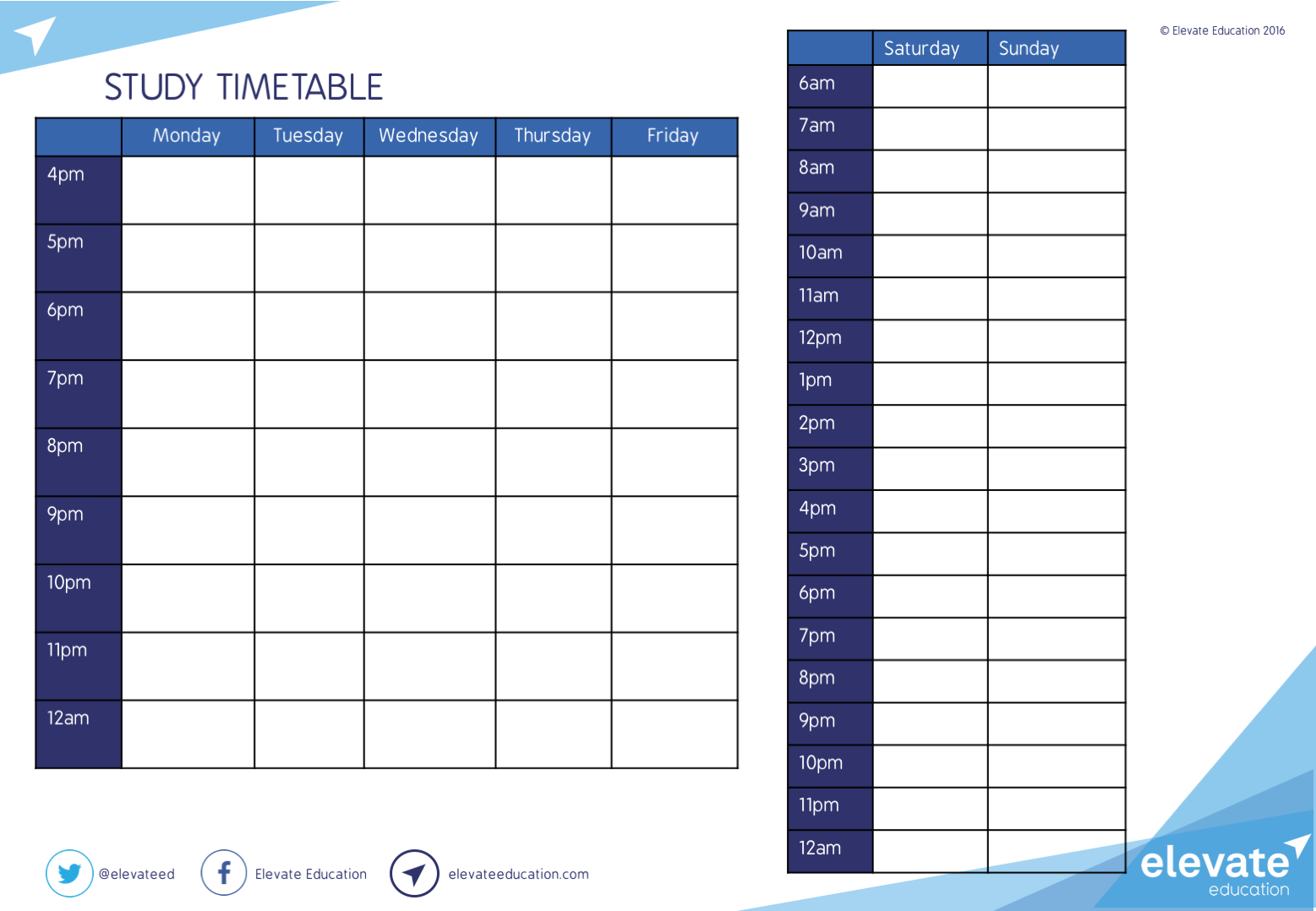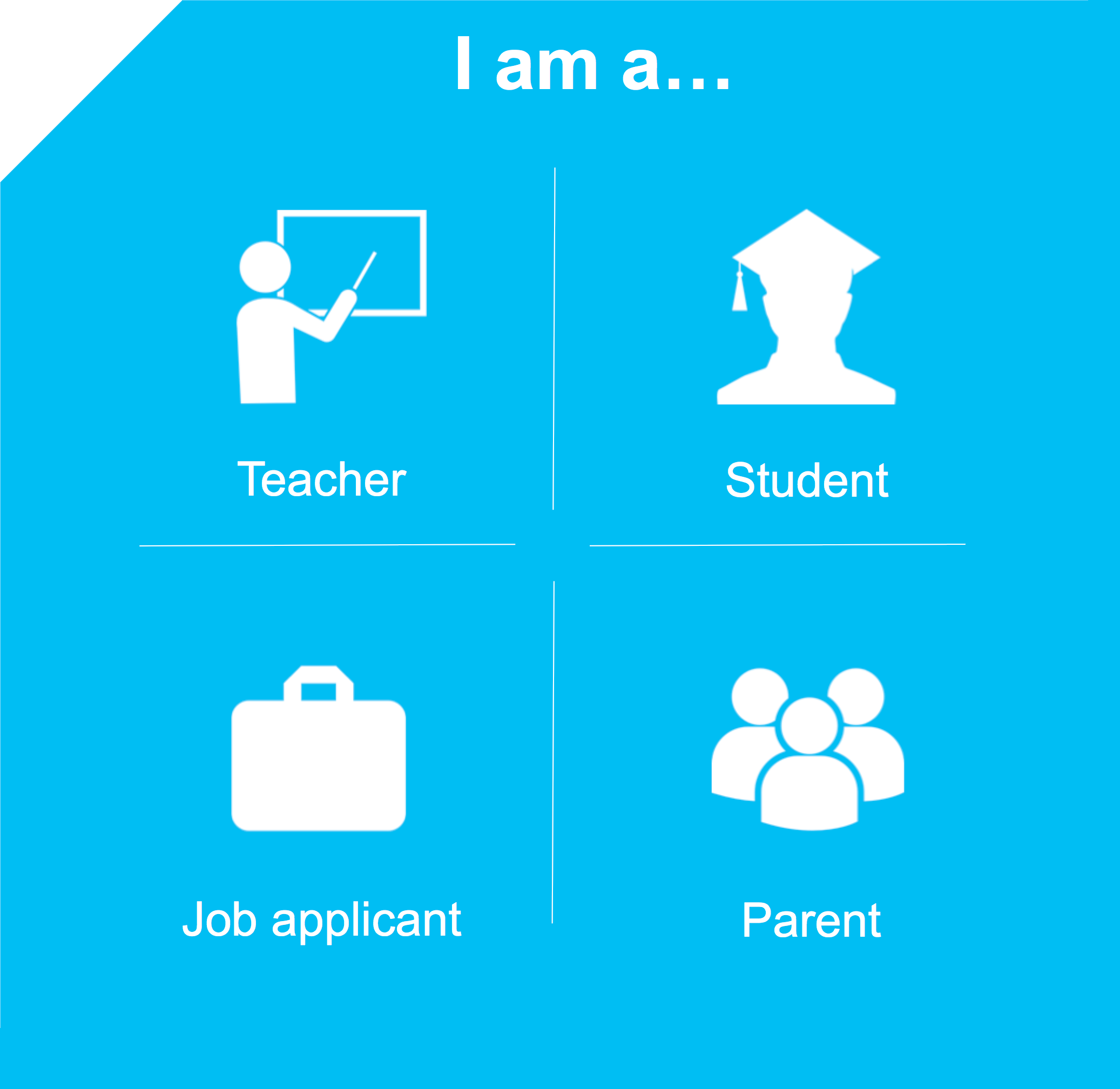Elevate conducts parent sessions, which provide parents an opportunity to ask questions and seek guidance as to how to best assist their child during middle school and high school. One of the most common questions we get asked is, "how much study should my child be doing" or "how can I get my child to put in more hours"? Invariably, time management is a major issue of contention between parents and their children.
The solution we provide, is to encourage parents to make a study timetable with their children. In this way, parents and their children can be on the same page (literally) regarding how much study the child should be doing. Also, by having a study timetable that is written down, it keeps both parties accountable: parents are accountable to it and therefore don't need to incessantly ask their children, "should you be studying?" Equally, a student is accountable to the timetable and the activities that they have committed to completing.
So how does it work? How do we make a study timetable?
Step 1: Determine the 'non-negotiables'
Most people mistakenly begin making a timetable by optimistically filling it with study. This is a massive mistake. By putting in the study blocks first, students get overly optimistic and overcommit to hours, which they can never keep to. This often leads to students getting stressed, overwhelmed, and ultimately giving up on the entire process of using a timetable at all.
Instead, we suggest that you ask your child to list all the activities that they love doing during the week and the things that they just don't want to compromise on. We then ask students to nominate a time that they would most likely allocate to these activities. For example, a list might look like this:
Basketball: Mondays, 6pm - 7:30pm and Sundays 2pm - 4pm
Xbox: Tuesdays and Thursdays, 7pm - 8pm, Saturdays 3pm - 6pm
Seeing friends: Weekends, 11am - 6pm
Netflix: Mondays, 8pm - 9:30pm
Social media: Daily, 8:30pm - 9:15pm
Work at the pharmacy: Saturdays, 10am - 2pm
Of course, it's difficult to know 'in advance' each leisure activity your child will do, but getting a rough estimation will be a good start. Once you have identified the key times for leisure activities, we encourage students to move on to step 2.
Step 2: Put in the fun stuff first

Once you have identified all the leisure and extra-curricular activities, the next step is to put those activities into the study timetable. You can download a digital version here
Step 3: Put study in the gaps
Finally, you will notice that the study timetable has many blank spaces or gaps left in it. These gaps are the times that your child can study in. Rather than putting in specific tasks here, they should just nominate these time blocks for studying. That way, they have a clear picture of the time they should be investing in their studies and once they sit down during that study block, they can determine their priorities and focus on completing their homework and revision tasks during that period.
By reversing the process of organising a study timetable (fun stuff first, study second), we reverse the student's perception of a study-timetable. It is no longer a 'study-timetable' that life fits around, it is a life-timetable that study fits around. This means that they are prioritising the things that they love, while still leaving plenty of time to study. In turn, this means that they are more willing to study in those periods because they know that they are not sacrificing the things that they truly love. This empowers students and gives them a sense of autonomy and control over their prioities.
By going through this process, you child will realise that there is always time to enjoy life and still have plenty of time to study - provided that we plan for it in advance. By laying out all the specific activities, we come to realise that we have more time than we previously thought. Also, it's important to keep in mind that this study timetable should be used as a guide, not as a rule book. The aim is not to stick to it 100% and live life by such regimented time-slots. If your child can stick to the timetable 60% of the time, that should be considered a 'win'.
You can download a digital copy of the study timetable here.







